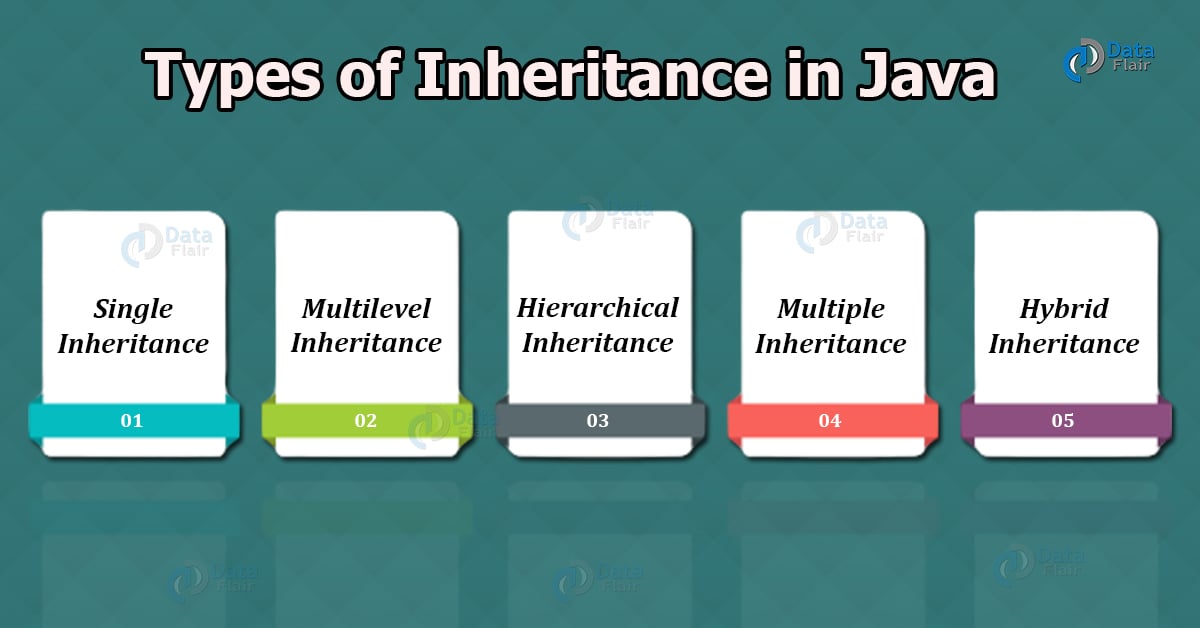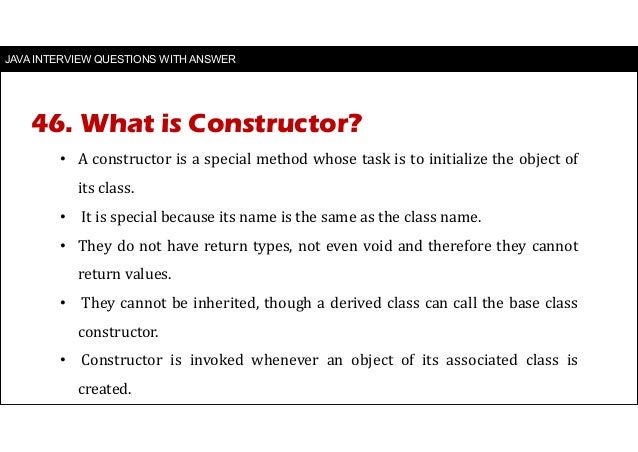
At most, one class can extend only one class.

But in Java, one class cannot extend more than one class simultaneously. This is because a class extends many superclasses. In Java, multiple inheritance leads to confusion for the programmer. Why Java does not support Multiple inheritance through classes? May get asked in the interview, especially for freshers.

Now, you need to understand why java does not support multiple inheritance through class. When two or more interfaces are implemented by a single class, only one method can share the method signature. The ambiguity created by the multiple inheritance is called diamond problem in java.īut, the functionality of multiple inheritance in Java can be achieved by using interfaces.

#Inheritance in java interview questions software#
Practically, it is very rare and difficult to use in a software project because it creates ambiguity, complexity, and confusion when a class inherits methods from two superclasses with the same method signature. Now, look at the different examples of multiple inheritance in the below figure to understand better. Look at the below figure where class C is derived from two superclasses A and B. It supports only single inheritance through class. Java does not support multiple inheritance through class. In multiple inheritance, there can be more than one immediate super class and there can be one or more subclasses. In other words, when a class extends multiple classes, it is known as multiple inheritance. Multiple Inheritance in Java with Exampleĭeriving subclasses from more than one superclass is known as multiple inheritance in java. The function methodY of class Y is inherited directly from class Y in class Z but the function methodX of class X is inherited indirectly from class X through class Y in class Z. Thus, class X is the grandfather of class Z (grandchild). Class X is the parent class (base class) for class Y (child class) and class Y is the parent class for class Z (child class). The above program demonstrates multilevel inheritance in Java. Z.methodZ() // Calling Z class local method. Z.methodY() // Calling Y parent class method. Z.methodX() // Calling X grand class method.
#Inheritance in java interview questions code#
Program source code 2: package multilevelInheritance Let’s take a simple example program based on multilevel inheritance in java. At the next level, the derived class becomes the base class for the next derived class and so on. This is as shown below in the diagram.Īs you can see in the above diagram, class A is base class of class B (derived class), class B is the base class of class C (derived class). In multilevel inheritance, there is one base class and one derived class at one level. Hierarchical Inheritance Multilevel Inheritance in Java with ExampleĪ class that is extended by a class and that class is extended by another class forming chain inheritance is called multilevel inheritance in java. Single inheritance is further classified into types that are as follows:Ģ. In the main, we have created an object of class B and called functions methodA() which is inherited from class A and methodB(). Class B contains inherited members ( methodA() ) of class A and methodB(). In class B, we have defined one function i.e. This makes class A as the base class of class B and class B is known as a derived class. The line “class B extends A” tells java compiler that B is a new class inheriting from class A. In this example program, we have a class A in which a single function methodA(). Obj.methodB() // methodB() of B will be called.

Obj.methodA() // methodA() of B will be called because by default, it is available in B. Declare a derived class or subclass and extends class A. Program source code 1: package singleLevelInheritance Look at the source code to understand better. In this example program, we will create only one superclass and one subclass that will inherit instance method methodA() from the superclass. On the basis of class, there are three types of inheritance in Java. In this tutorial, we will learn types of inheritance in java such as single, multilevel, multiple, hierarchical, and hybrid inheritance with practical example programs. I recommend that once you definitely see them for practice. We have nicely explained the basics of inheritance in java with realtime examples and the best collection of inheritance interview programs with explanations. If you have any difficulties in inheritance, go for the previous tutorials. So far, we have familiarized with basic of java inheritance and advantages of using inheritance in software development. That means code once is written, can be used again and again in the new classes. Inheritance is used for code reusability. Types of Inheritance in Java | We know that the term inheritance refers to that one class can inherit all of the properties and behaviors from another class.


 0 kommentar(er)
0 kommentar(er)
